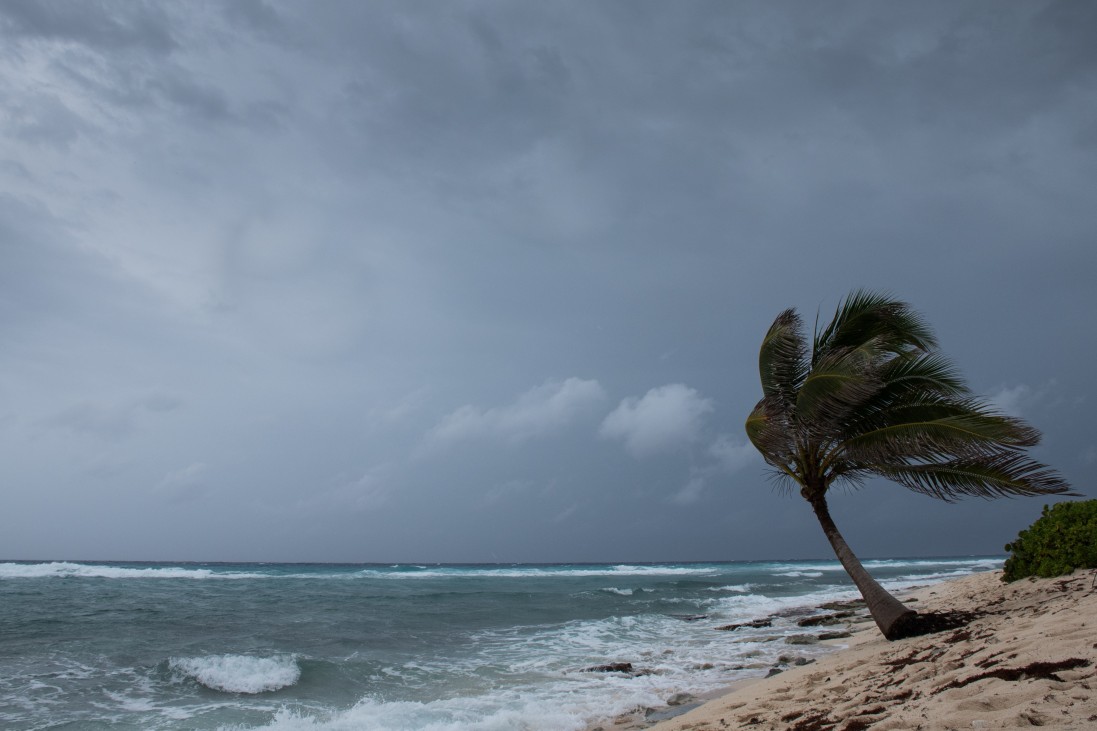
Heavy Rain, Flooding, and Chance of Severe Weather Staring Down the Southern U.S.
January 22, 2024
Posted: September 17, 2021 12:14 pm





Two Additional Systems in Atlantic on Radar
Forecasters at the National Hurricane Center (NHC) are continuing to monitor what they are calling Invest 96L out in the Atlantic Ocean off of the coast of the Carolinas. The experts are predicting that this system will develop into a tropical depression or storm by the end of Friday.
The next name on the list for the 2021 Atlantic hurricane season is Odette. The NHC has been monitoring this area of low pressure since last weekend. As of Friday morning, the primary circulation was positioned just 150 miles off Cape Hatteras, North Carolina. There is a strong chance that this system will become a tropical depression or storm for a short period of time. The system is moving to the northeast at about 15 mph. The NHC puts the odds that this system develops into a named storm over the next 48 hours at 70%.
While the storm is not expected to make a direct hit on the US, there is still a good chance that it will bring high surf and other dangerous impacts to the Atlantic coast throughout the weekend. This area of impact could stretch from the mid-Atlantic coastline all the way to the New England coast and into Atlantic Canada.
The deteriorating conditions will create stronger waves and rip currents than are typical for this time of the year. Swimmers and boaters are being asked to exercise caution in areas stretching from the Carolinas to Massachusetts.
In addition to the rough surf conditions and potential of gusty winds, it is not out of the question that minor coastal flooding may happen during high tide. This is particularly true for the barrier islands of the region.
The feature had been expected to explode by Friday morning. However, winds coming in from the north and dry air moving into the region from the west combined to limit its chances of development. However, the environmental conditions conducive for intensification are now in place for the strengthening to happen. This includes warm waters in the Gulf Stream hovering in the 80s. This warm water stretches from the coast of the Carolinas up to the mid-Atlantic coastline.
Tropical Rainstorm Nicholas is still hanging out near the border of Louisiana and Texas. This slow-moving system will continue to deliver moisture to the southeastern US through the next few days.
Heavy rains and thunderstorms will bring significant precipitation to Louisiana, Mississippi, northern Florida, Georgia, and into the Carolinas through the weekend and into early next week. Nicholas has already been blamed for up to 11 inches of rain dumped over Louisiana in the last few days. Because the grounds are still taking on the moisture from Hurricane Ida, the area is particularly susceptible to localized flash flooding.
Another 1 – 3 inches of rain is expected along the Gulf Coast and into the Southeast for the next few days. The central and northeastern Gulf Coast will see the highest chance of flooding as a result of the persistent precipitation. The threat of isolated severe thunderstorms will also raise the risk of tornadic activity and waterspouts in the Southeast through the weekend.
Two additional systems in the central and eastern Atlantic are also under close monitoring. A tropical wave now known as Invest 95L is tracking across the central Atlantic at a rapid pace. This system is currently located approximately 1,100 miles to the southwest of the Cabo Verde Islands. Ever since it appeared on the radar early in the week, the wave has continued to produce a series of robust rain showers and thunderstorms.
Because it has been moving so quickly across the open ocean waters, it has not had the chance to organize with a defined center. However, the wave is likely to encounter an increased amount of wind shear and drier air in the coming days. These conditions may slow it down and break it up.
There is still a chance that the system will develop into a tropical depression over the weekend or at the beginning of next week. The system is forecast to keep moving to the west and northwest at a speed of 15 to 20 mph. This will put it to the north of the Leeward Islands by Monday or Tuesday.
The NHC puts the chance that this wave will develop into at least a tropical depression over the next 48 hours at 60%. The odds rise to 70% for formation over the next five days.
The current track shows the system moving near or over Puerto Rico by the middle of next week. At this point, the feature could dissipate and not affect any land in the US. Or it could move closer to the East Coast. There is also still the chance that it could dip below the westerly winds off of the East Coast and wander into the Gulf of Mexico.
An additional tropical wave has moved off the coast of Africa over the last 24 hours, presenting another potential threat of tropical weather. However, current environmental conditions do not appear to be conducive for further development. The system is forecast to move to the west and northwest at a slow speed of 5 to 10 mph. It is currently positioned a few hundred miles to the southeast of the Cabo Verde Islands.

January 21, 2024

January 19, 2024

January 18, 2024